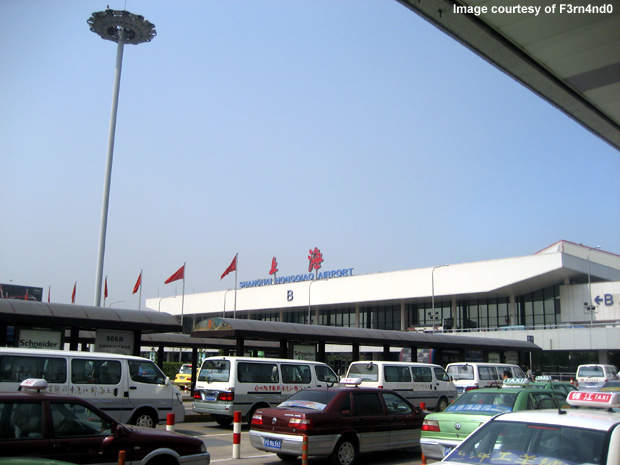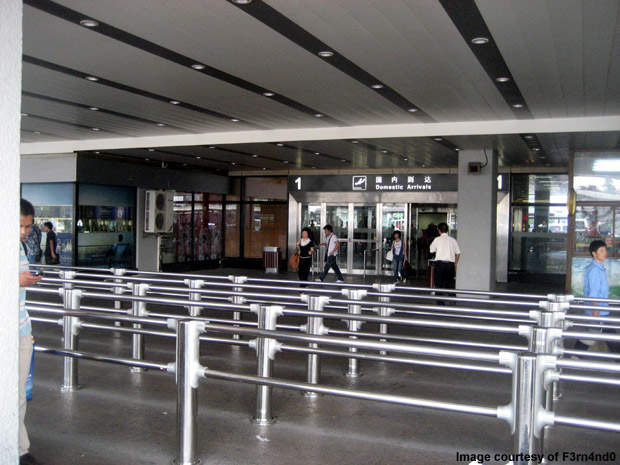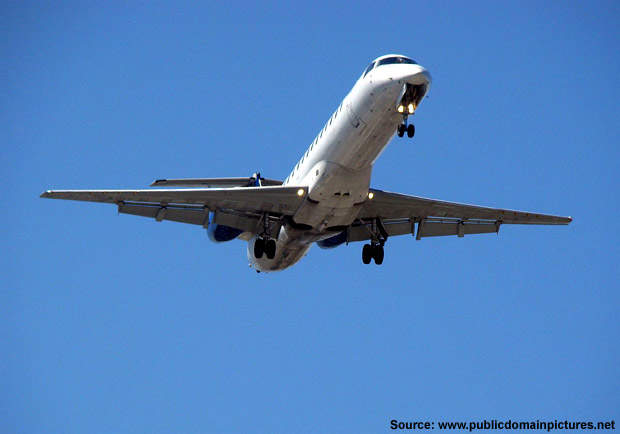Located 13km west of downtown Shanghai, Shanghai Hongqiao International Airport is China’s first civilian airport. The airport became one of three international air transit centres in China after a series of renovations. It is owned and operated by the Shanghai Airport Authority.
The airport handled 25,078,548 in 2009 and is the fifth busiest airport in China in terms of cargo handling and the seventh in passenger traffic movements.
The airport comprises two terminals. The second terminal, expected to increase the airport’s passenger capacity to 40 million by 2015, opened to the public on 16 March 2010 along with a new runway.
Shanghai Hongqiao airport is one of two airports in Shanghai. It was the main international airport in the city until Shanghai Pudong International Airport began operating in 1999. Most of the international flights were then shifted to the new airport.
Hongqiao airport now operates airlines to two international destinations – Tokyo’s Haneda airport and central Seoul’s Gimpo airport. Operations to Haneda airport started in September 2007, while those to Gimpo airport began in October 2007.
Shanghai Hongqiao airport expansion
The airport recorded 19 million passengers in 2006 against its passenger-handling capacity of 9.6 million. In an effort to accommodate increasing passenger traffic at the airport, the National Development and Reform Commission approved Shanghai Hongqiao airport’s expansion in February 2007. The expansion will increase passenger capacity to 40 million, and cargo and mail turnover to one million tons by 2015.
The RMB15.3bn ($2.2bn) expansion project includes a new 250,000m² four-storey terminal building, a 3,300m runway and assistant public facilities.
Hongqiao airport terminal features
Terminal 1 (T1) is located on a 82,000m² site. It includes zone A and zone B featuring 15 waiting halls, 18 VIP lounges and 15 baggage transfer belts. About 300 aircraft operate from the airport every day.
T1 has 80 check-in counters. Amenities at the terminal include shopping and dining facilities, clinics, a business centre, smoking room, lounges, battery car and baggage storage. It also has meeting rooms, a telephone, fax, photocopying and telex facilities, and catering services.
The airlines currently operating from the T1 include Spring, All Nippon Airways, Japan, Asiana and Korean Air, in addition to flights to Japan and Korea by Shanghai and China Eastern.
The T2 has 80 check-in counters and 47 security check passages. The passages are interconnected with a U-shaped control panel, ensuring three passengers can be checked in at the same time during peak hours. The arrival hall also has 55 boarding gates located about 100m to 300m away from security checks.
The airlines currently utilising T2 are China Eastern, Shanghai, Air China, China Southern, Xiamen, Shenzhen, Shandong, Hainan, Tianjin, Sichuan and Juneyao.
The terminals feature 65 elevators (16 barrier-free), 52 escalators and 34 travelators (1,624m in total).
The airport operates free shuttle bus services between the two terminals. Passengers can reach T2 from T1 within 15 minutes.
Airport departure, ticketing and arrival hall display systems
T2 has three big screens in the departure, ticketing and arrival halls to display flight data for passengers. A navigation signage system is also installed in the terminal to display different modes of transports available – red for metro, blue for railways, orange for the maglev and green for the terminal building. This signage system displays characters in a dark grey background with bright white lettering.
Airport departure hall wireless internet access
The airport provides its passengers with high-speed, free-of-charge wireless internet access across the departure hall. Passengers can access the internet facility in 12 free areas of waiting halls.
Terminal 2 car parking
T2 features two parking lots – P6 and P7 in the East Traffic Center. The signs of animals point the direction to each parking area.
Hongqiao airport runways
The runways are located in the middle of two terminal buildings. The older 18L/36R runway is 3,400m long and surfaced with asphalt material.
The second, newer runway is a 4E-class, near-distance, parallel 18R/36L runway, also surfaced with asphalt material. The runway caters to larger aircraft, including the A380. It is 3,300m long and 60m wide.
Airport voice communication system
A VCS 3020X voice communication system (VCS) was fitted at Shanghai Hongqiao airport in 2009. The installation process was executed by an Austrian company, Frequentis, as part of the airport expansion plan. The VCS is installed in the air traffic control building at the airport.
Hongqiao road and rail infrastructure
Passengers can use taxi services available at the exit of the arrival hall in T1 to travel from the airport to different parts of the city.
The subway train located in T2 transports passengers to the Jing’an Temple and Pudong International Airport.
T2 is connected to different parts of the city through an interchange station between lines 2 and 10. Line 2 was opened to the public in March 2010, while line 10 is expected to be inaugurated in October 2010. Shanghai No.1/2 Metro Operation operates the lines located in T2.
The extension of Shanghai Maglev Train from Longyang Road through Shanghai South Railway Station to Hongqiao, originally planned for 2010, has been postponed.





